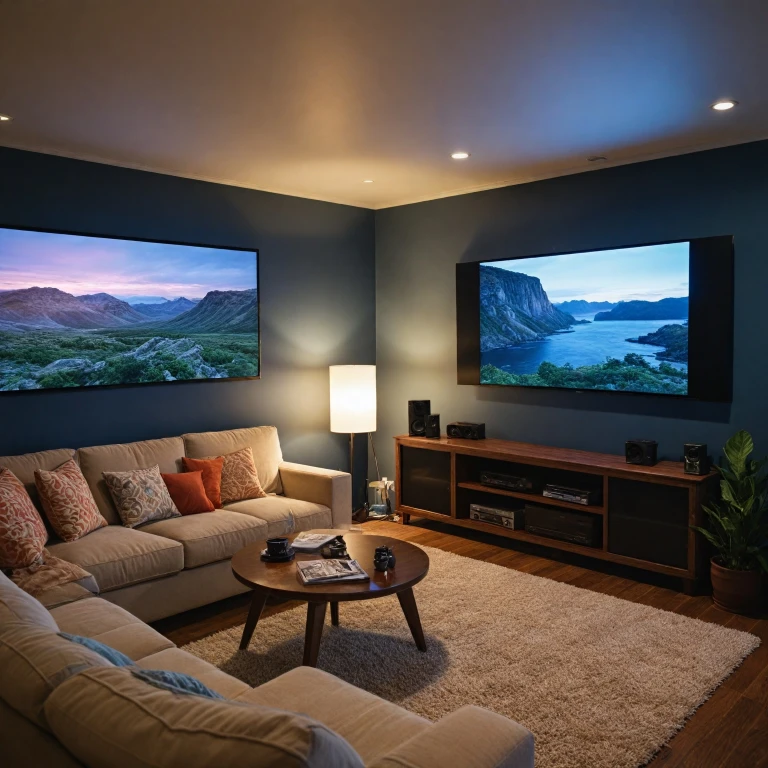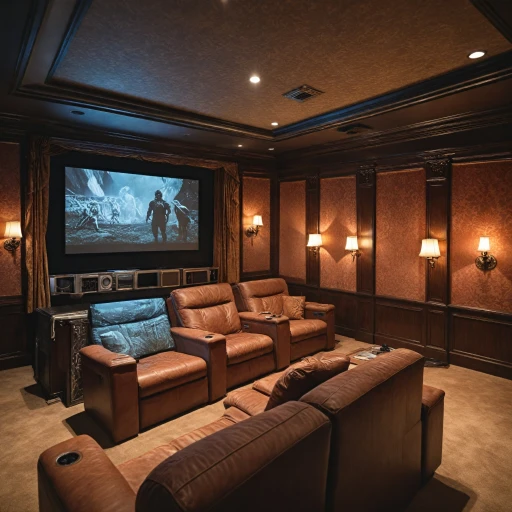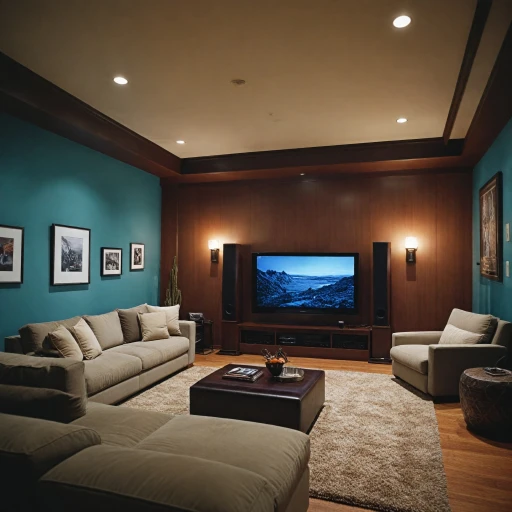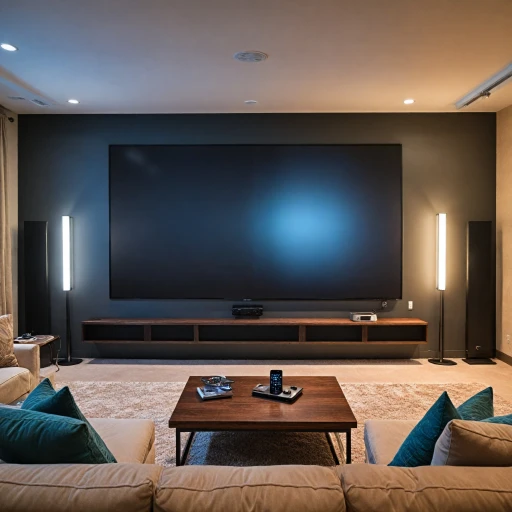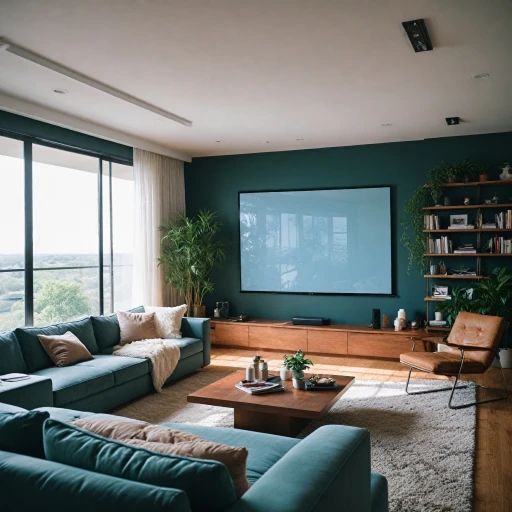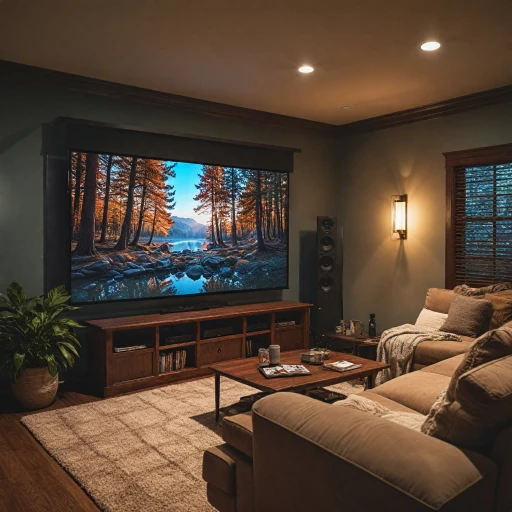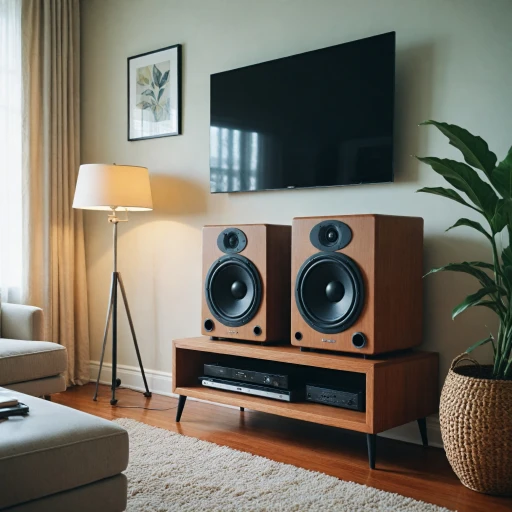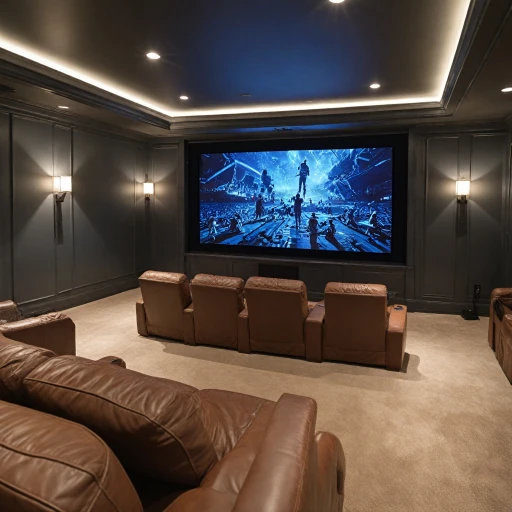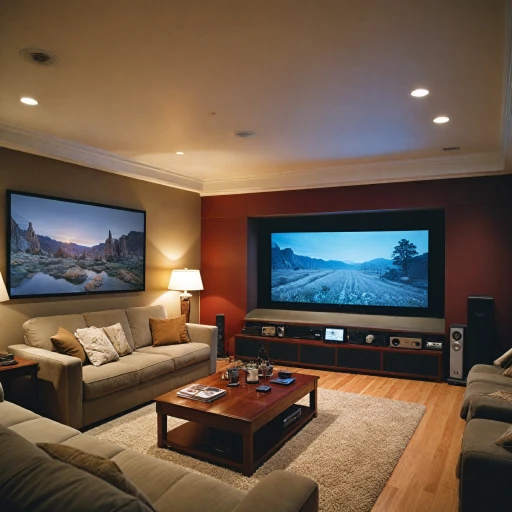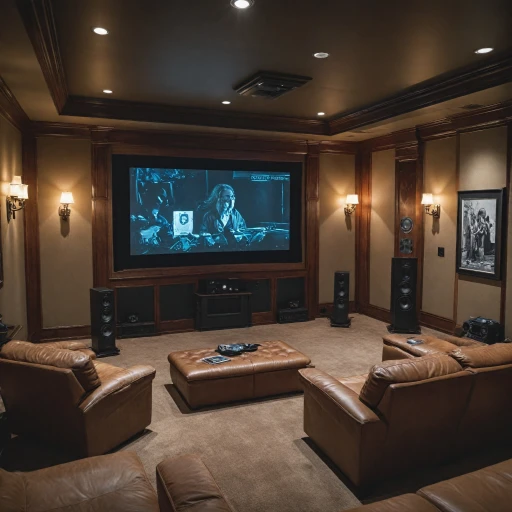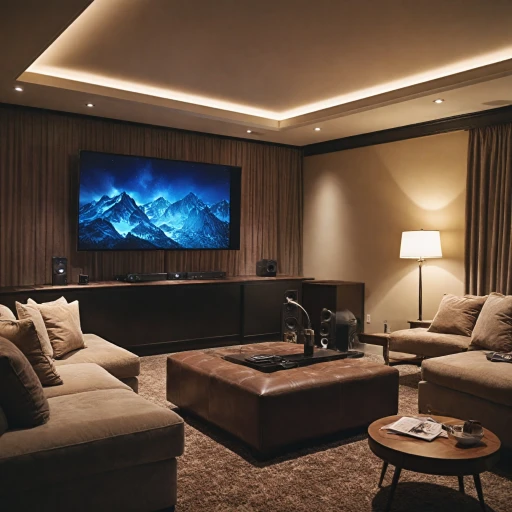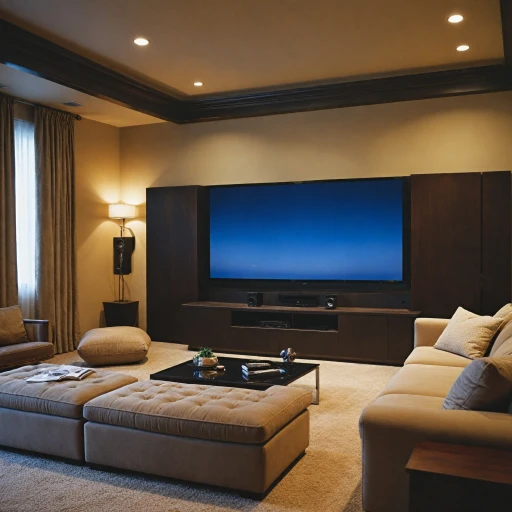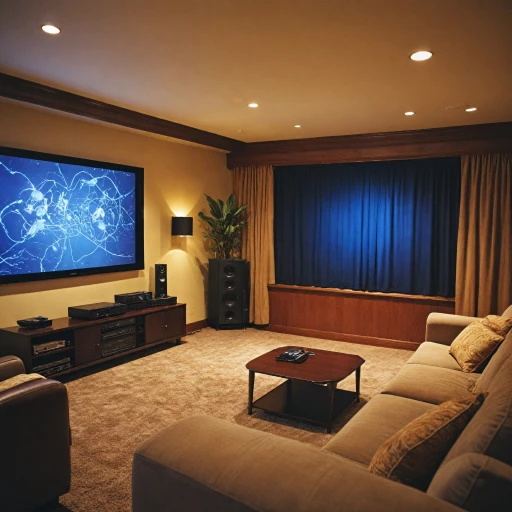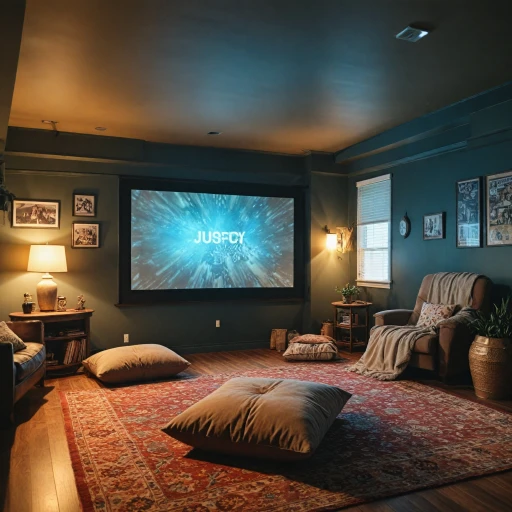
Understanding Ambient Light Rejecting Screens
The Science Behind ALR Screens
Understanding the science behind ambient light rejecting (ALR) screens is crucial for anyone considering enhancing their home theater experience. ALR screens are uniquely designed to differentiate between projector light and ambient room light. This capability vastly improves the viewing quality in various lighting conditions by minimizing the intrusion of ambient light on the projected image.Design Characteristics of ALR Materials
At the core of ALR screens is their specially engineered materials that enable them to reject ambient light. These screens are not simple white or gray surfaces. Instead, ALR screens incorporate advanced materials that selectively reflect projector light while absorbing or deflecting unwanted ambient light. This feature is particularly beneficial for rooms that have uncontrolled light sources, such as windows or overhead lighting.Why Choose ALR Over Traditional Screens?
When comparing to standard projector screens, ALR screens clearly stand out in managing light spill from different directions. Typical screen materials fail to isolate projector light from other light sources, causing washed-out images. On the contrary, ALR materials maintain high image quality and color contrast, even in non-darkened rooms. For those seeking more insight on how fixed projection setups can further augment image quality, consider exploring informative resources on a wall-mounted projector screen setup.Compatibility and Flexibility
Another aspect of ALR screens worth noting is their compatibility with a wide range of projector technologies, including short throw and ultra short throw projectors. They come in various sizes, such as the common 106-inch and 120-inch formats, making them suitable for different room dimensions. Furthermore, whether opting for a fixed frame setup or a tab tension model, there's flexibility to accommodate various installation preferences and performance requirements. Consider the price elite range of these screens if budget and performance are a concern. Investing in an ALR projector screen brings the assurance of an upgraded cinematic experience, ensuring vibrant visuals regardless of ambient light interference.Benefits of Using an Ambient Light Rejecting Screen
Advantages of an Ambient Light Rejecting Screen
Investing in a high-quality ambient light rejecting screen can significantly uplift your home theater experience. These screens utilize advanced technology to counteract the effects of unwanted light on your viewing experience. Here's why adopting an ALR projection screen could be a game-changer.
- Enhanced Image Clarity: ALR screens efficiently reject ambient light, resulting in a more vivid and crisp image. This ensures that the visuals remain bright and clear even in well-lit environments.
- Improved Contrast: Thanks to their design, these screens maintain high contrast levels, which elevates the depth and richness of colors, making movies and shows look more lifelike.
- Versatility in Lighting: Unlike traditional projector screens, ALR screens make it possible to enjoy your screen even with lights on or during daylight, offering flexibility in where and when you use your projector.
- Optimized Viewing Angles: Many ALR screens are crafted to provide better viewing angles, ensuring an optimal experience for viewers across the room, not just those directly in front of the projection screen.
- Compatibility with Different Projector Setups: Whether you're using short throw projectors, ultra short throw, or fixed projection setups, there's an ALR screen suitable to meet specific needs, allowing better display options without compromising quality.
As the demand for projector screens grows, technologies like ALR make it feasible to maintain a cinematic quality in diverse settings. For more insights on how fixed projection screens enhance home theaters, don't miss our detailed exploration.
Comparing Screen Materials and Technologies
Material and Technological Advances in ALR Screens
When deciding on a projection screen, understanding the various materials and technologies used in ambient light rejecting (ALR) screens is crucial. These screens are specifically designed to enhance your viewing experience by rejecting ambient light that can wash out the image from your projector. One of the most popular materials used in ALR screens is the fixed frame type. These provide a stable and durable surface, often equipped with a tensioning system to ensure the material remains perfectly flat. Fixed frame screens are typically available in a vast array of sizes, from a modest 80 inch projector screen to larger models that can dominate a room. The price elite screens offer varies widely with these dimensions. On the technological frontier, ultra short throw (UST) projectors benefit significantly from ALR screens. The technology in these screens works hand in hand with UST projectors by minimizing light scatter, thus enhancing picture contrast and brightness. Products like the fixed frame ALR screen excel in providing a superior viewing angle, making them favorable for broader seating arrangements. Moreover, the adoption of innovative fabrics in ALR projector varieties accommodates both tab tension and non-tension styles, improving the user experience. For those considering projection screens, investing in ALR ambient rejection screens represents not only a leap in technology but also a substantial investment in quality viewing. Comparing various projector screens and the capabilities of ALR screens can help in making an informed decision, and the benefits are detailed in our post on enhancing your viewing experience with a wall-mounted projector screen. Here, the discussion further explores the interplay between screen materials and ambient light conditions, illustrating what to consider for optimal performance.Installation Considerations for Optimal Performance
Setting Up for Success: Installation Tips for ALR Screens
When it comes to installing an Ambient Light Rejecting (ALR) screen, achieving optimal performance requires careful consideration of several factors. Whether you're using a short throw or ultra short throw projector, the positioning and setup can significantly impact the viewing experience.
- Location and Lighting: Choose a location where the screen is least affected by ambient light. Even though ALR screens are designed to combat ambient light, minimizing direct light sources can enhance performance.
- Screen Size and Throw Distance: Ensure your projector's throw distance aligns with the screen size. For instance, a short throw projector needs to be placed at a specific distance to fill a 100-inch projector screen effectively.
- Mounting and Alignment: Consider a fixed frame setup for stability. Proper alignment is crucial, especially with ultra short throw projectors, to avoid image distortion.
- Wall and Ceiling Considerations: Ensure the wall or ceiling can support the weight of the screen. Some screens inch closer to heavier weights, particularly those with a fixed frame or tab tension.
- Testing and Calibration: After installation, test the projection screen with your projector. Calibrate the image settings to achieve the best picture quality, adjusting brightness and contrast as needed.
By taking these installation considerations into account, you can maximize the benefits of your ALR screen, ensuring a superior viewing experience in various lighting conditions. Keep in mind that while the initial price of elite products might seem high, the enhanced performance and durability often justify the investment.
Cost vs. Performance: Is It Worth the Investment?
Evaluating the Trade-off Between Cost and Performance
Selecting the ideal ambient light rejecting (ALR) screen for your home theater setup often comes down to weighing the price against the performance you're hoping to achieve. ALR screens are designed to enhance the quality of the image from your projector by reducing the impact of ambient light, which can be a significant advantage in less controlled environments. But how do you decide if it's a worthwhile investment? The first step in evaluating the cost vs. performance is to understand what you're getting. ALR screens, especially those from top brands like Elite Screens, often come with specialized coatings and materials that help reject ambient light. This advanced technology generally means these screens carry a higher price tag compared to standard projection screens. Consider these factors as you make your decision:- Room Conditions: If your viewing area has lots of ambient light, such as windows or light-colored walls, investing in an ALR screen can dramatically improve your viewing experience. For rooms with controlled lighting, a standard screen may suffice, saving you money.
- Projector Compatibility: An ALR screen can be particularly beneficial if paired with ultra short throw projectors, as it allows the screen to maintain vibrant colors and clear images, even when situated close to the frame. Compatibility with your existing or planned projector setup is crucial for achieving the best results.
- Screen Type and Size: Fixed frame screens and tab tension screens are common setups for ALR solutions, both offering different benefits in terms of stability and aesthetic appeal. Size is another major determinant; larger screens, such as those spanning 100+ inches, will naturally lead to higher costs.
- Long-Term Benefits: Consider the longevity and performance enhancement of an ALR screen as a long-term investment. While the initial cost might be higher, the sustained improvement in viewing quality can outweigh ongoing expenses associated with other upgrades, like constantly adjusting room lighting.
